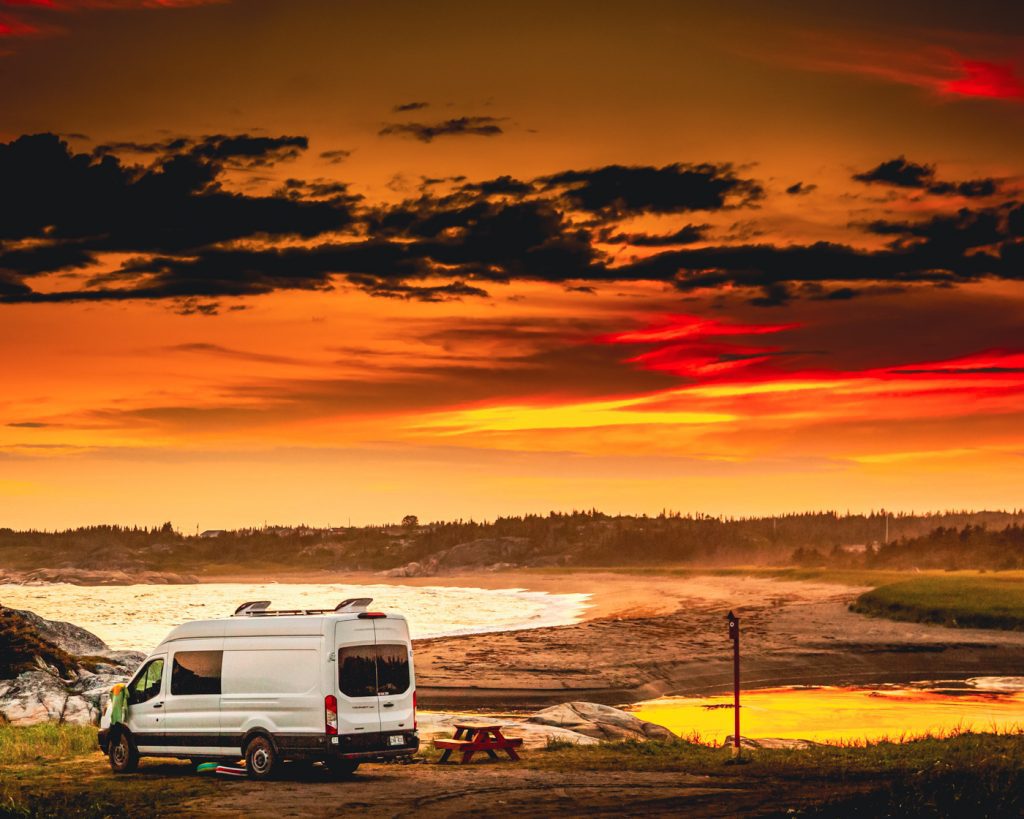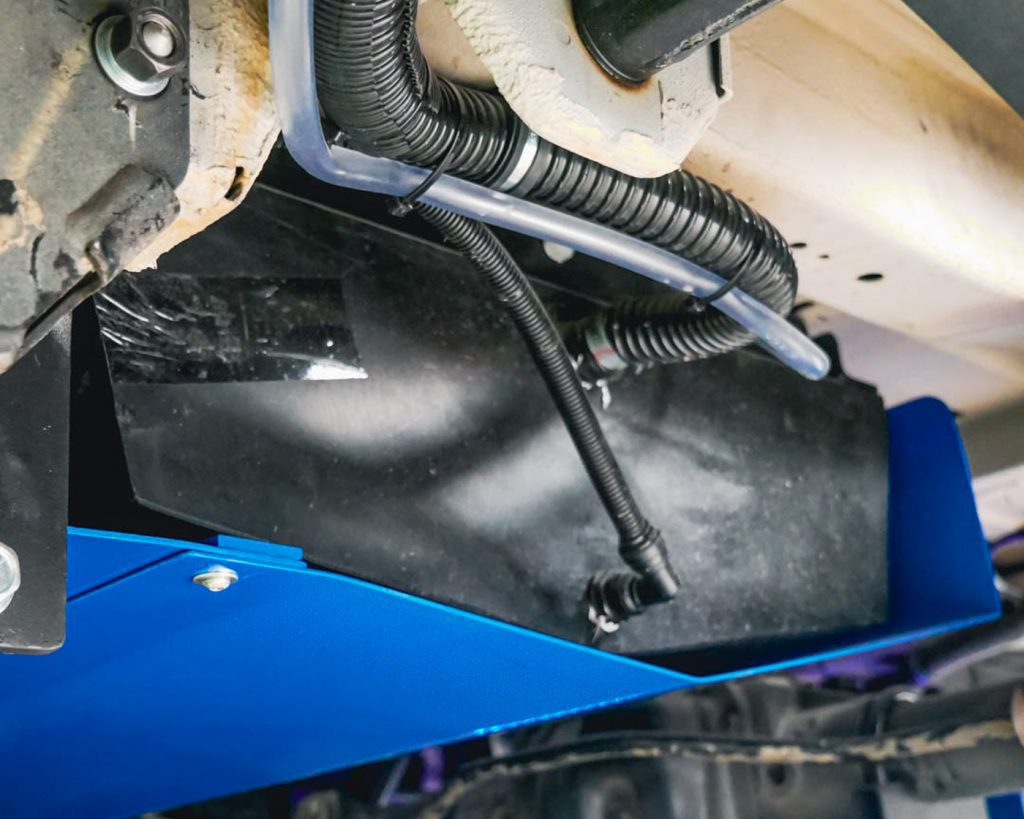Ah, the open road and the joys of motorhome adventures – there’s nothing quite like it! But as a motorhome owner, you know that maintaining your home-on-wheels is essential to keep those good times rolling. One pesky problem that can dampen your spirits (and your motorhome) is water damage. Left unchecked, it can lead to costly repairs and even compromise your vehicle’s structure. Fear not, fellow motorhome enthusiasts! We’ve got you covered with this friendly, informative guide on how to spot the telltale signs of water damage. From exterior indicators to common leak-prone areas, interior red flags, and equipment checks, we’ll help you stay vigilant and protect your investment. And because prevention is better than cure, we’ll also share some handy tips to avoid future H2O havoc. So buckle up, and let’s dive into the world of motorhome water damage detection and prevention!
I. Physical Signs of Water Damage on the Exterior of the Motorhome
The first line of defense against water damage is spotting issues on your motorhome’s exterior. Keeping an eye out for these telltale signs can help you nip problems in the bud before they become more extensive and expensive to fix.
A. Discoloration and staining
Take a close look at your motorhome’s exterior surfaces. If you notice any unusual discoloration or staining, it could be a sign of water damage. Be particularly cautious of dark or rusty spots, as these may indicate underlying moisture issues.
B. Bubbling or peeling paint
As water seeps into your motorhome’s walls, it can cause the paint to bubble or peel away from the surface. Inspect your motorhome for any areas where the paint appears to be lifting or flaking off, as this is often a telltale sign of water damage lurking beneath.
C. Warped or soft spots in the siding
Examine the siding of your motorhome for any signs of warping or soft spots. These can occur when water infiltrates the walls and damages the structural components. Press gently on the siding – if it feels spongy or soft, there’s likely water damage within.
D. Rust or corrosion on metal components
While some rust is normal on older motorhomes, excessive rust or corrosion on metal parts such as window frames, door hinges, and other fixtures may signal water damage. Keep an eye out for any areas where rust appears to be spreading or corroding the metal at an alarming rate.
By regularly inspecting your motorhome’s exterior for these physical signs of water damage, you can catch issues early on and prevent them from causing more significant problems down the road. In the next section, we’ll explore common places where water leaks can occur so you know exactly where to focus your attention during inspections.

II. Common Places Where Water Leaks Can Occur
Now that you know what signs to look for on the exterior of your motorhome, it’s essential to understand where these leaks typically originate. By focusing on these common areas, you can be more proactive in detecting and preventing water damage.
A. Roof seams and vents
The roof is one of the most vulnerable areas for water leaks in a motorhome. Pay special attention to seams, vents, and any other openings on the roof. Over time, sealants can crack or deteriorate, allowing water to seep in. Regularly inspect these areas and reseal them as needed to keep your motorhome watertight.
B. Windows and doors
Windows and doors are also prime spots for water leaks. Check the seals around these openings for any signs of wear or damage. If you find any gaps or cracks, reapply caulk or weatherstripping to ensure a tight seal and prevent water intrusion.
C. Fiberglass and other exterior materials
Motorhomes made with fiberglass or other composite materials may develop hairline cracks over time. These tiny fissures can allow water to infiltrate your motorhome’s structure. Inspect the exterior surfaces closely for any signs of cracking, and repair or reseal them promptly to prevent further damage.
D. Plumbing connections and fixtures
Plumbing systems within your motorhome, such as sinks, showers, and toilets, can also be sources of water leaks. Check all connections and fixtures for any signs of dripping or moisture. Don’t forget to inspect the hoses and pipes leading to and from your freshwater and wastewater tanks, as they can also develop leaks.
By familiarizing yourself with these common leak-prone areas and regularly inspecting them, you can significantly reduce the risk of water damage in your motorhome. In the next section, we’ll delve into the interior signs of water damage, helping you identify issues that may not be visible from the outside.
III. Signs of Water Damage on the Interior of the Motorhome
While exterior inspections are essential, water damage can also manifest itself inside your motorhome. Keep an eye out for these telltale signs to ensure you catch any issues before they escalate and cause more extensive damage.
A. Water stains on walls, ceilings, and floors
One of the most obvious signs of water damage is staining on your motorhome’s interior surfaces. Look for watermarks or discoloration on walls, ceilings, and floors, as these may indicate a leak or moisture issue. Be sure to check hidden areas, such as inside cabinets and under furniture, as leaks can sometimes go unnoticed in these less-visible spots.
B. Soft or spongy spots in flooring or walls
If water has seeped into your motorhome’s structure, it can cause the materials to weaken and become soft or spongy. Gently press on walls and floors to test their firmness. If you notice any areas that feel unusually soft or give way under pressure, you may have water damage that requires attention.
C. Musty odors or visible mold growth
A persistent musty smell or visible mold growth is often a sign of hidden water damage. Mold thrives in damp environments, so its presence could indicate moisture issues within your motorhome. If you notice mold or a musty odor, investigate further to find the source of the problem and address it promptly to prevent potential health hazards.
D. Swelling or warping of cabinetry and furniture
Wooden cabinetry and furniture can absorb moisture, leading to swelling or warping. Inspect these items for any signs of distortion or damage caused by water exposure. If you find any affected pieces, it’s crucial to identify and fix the source of the moisture to prevent further damage.
By staying vigilant and monitoring your motorhome’s interior for these signs of water damage, you can ensure a safe and comfortable living environment. In the next section, we’ll discuss the importance of your technical equipment’s functioning to keep your motorhome dry and protected.
IV. Technical Equipment’s Functioning to Keep Your Motorhome Dry
Your motorhome is equipped with various technical features designed to protect it from water damage. Ensuring these systems are functioning correctly can help you maintain a dry and secure environment inside your motorhome.
A. Properly sealed roof vents and skylights
Roof vents and skylights play a crucial role in ventilating your motorhome and preventing condensation buildup. However, they can also be entry points for water if not adequately sealed. Regularly inspect the seals around these openings and reapply sealant as needed to ensure a watertight barrier.
B. Functioning window and door seals
Window and door seals are essential for keeping water out of your motorhome. Over time, these seals can wear down or become damaged, allowing water to seep in. Check the condition of your window and door seals regularly and replace them if necessary to maintain a tight seal against the elements.
C. Adequate insulation and vapor barriers
Insulation and vapor barriers in your motorhome’s walls, floors, and ceilings help regulate temperature and prevent condensation. Ensure these materials are in good condition and properly installed to keep moisture at bay. Damaged or inadequate insulation can contribute to water damage and mold growth.
D. Maintaining plumbing systems and appliances
Regularly inspect and maintain your motorhome’s plumbing systems and appliances, such as water heaters, pumps, and faucets. Leaks and malfunctions in these systems can lead to water damage if not addressed promptly. Perform routine maintenance and promptly repair any issues to keep your motorhome’s plumbing in tip-top shape.
By staying on top of your motorhome’s technical equipment and ensuring everything is functioning correctly, you’ll be better equipped to prevent water damage. In our final section, we’ll discuss preventive measures you can take to avoid water damage in the future.

V. Preventive Measures to Avoid Water Damage in the Future
Prevention is always better than cure, and when it comes to water damage in your motorhome, taking a proactive approach can save you time, money, and stress. Here are some preventive measures you can implement to keep your motorhome dry and protected from water damage:
A. Regularly inspecting your motorhome for signs of leaks
Perform routine checks on your motorhome’s exterior and interior for any signs of water damage or leaks. By catching issues early, you can address them before they escalate and cause more significant problems.
B. Promptly addressing any detected issues
If you discover any signs of water damage or leaks during your inspections, don’t wait to address the issue. The longer water is allowed to infiltrate your motorhome, the more extensive and costly the damage can become. Promptly repair or reseal any problem areas to protect your investment.
C. Keeping up with routine maintenance tasks
Regular maintenance goes a long way in preventing water damage. Stay on top of tasks such as resealing roof seams and vents, checking window and door seals, and maintaining your plumbing systems and appliances. By being proactive with maintenance, you’ll be better prepared to prevent water damage in the long run.
D. Utilizing protective covers and storage solutions when not in use
When your motorhome is not in use, consider using protective covers or storing it in a sheltered area to shield it from the elements. Exposure to rain, snow, and ice can increase the risk of water damage, so taking steps to protect your motorhome when it’s not on the road can help preserve its condition.
By implementing these preventive measures and staying vigilant in your motorhome maintenance, you can significantly reduce the risk of water damage and ensure your home-on-wheels stays in tip-top shape for years to come. Enjoy your motorhome adventures with confidence, knowing you’ve taken the necessary steps to protect your investment from water damage.
It’s time to conclude
Ah, dear motorhome enthusiasts, we’ve reached the end of our watery tale. Yes, water damage in motorhomes is like a pesky relative who always shows up uninvited – it’s an inevitable part of the journey. But don’t let that dampen your spirits or steer you off course! After all, every cloud has a silver lining, and in this case, the lining is waterproof.
You see, much like a determined sea captain navigating stormy waters, you too can rise above these H2O hurdles with a mix of humor, vigilance, and a trusty roll of caulking tape. Just remember: when life gives you leaks, make leak repairs!
So, as you continue your motorhome escapades, don’t forget to keep an eye out for those sneaky signs of water damage – because, as they say, “a stitch in time saves nine… and a well-timed reseal saves your motorhome.” And if all else fails, take comfort in the fact that most motorhome insurers are like good umbrellas – they’ll have you covered when the rain starts pouring.
In conclusion, my fellow road warriors, let us raise a toast (preferably not near any open windows or vents) to conquering water damage with a splash of wit and humor. May your motorhome adventures be filled with laughter, dry interiors, and memories that last a lifetime – or at least until your next roof inspection. Happy travels!



